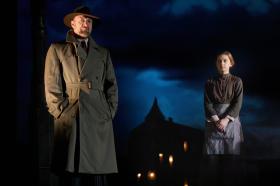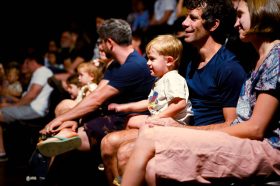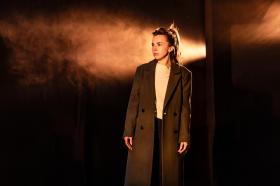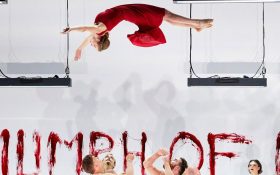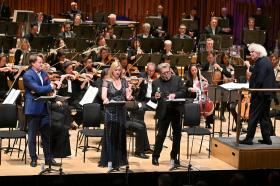‘We did our first audio description show nearly 30 years ago in Melbourne,’ says Michael Ward, Manager, Audio Description Services, Vision Australia. ‘In the last eight years it has really taken off. [In that time] we would have put on over 1800 audio described performances across the country.’
Audio description offers people who are blind or have low vision access to visual information via succinct narration. Every weekend, Vision Australia audio describes two to three productions. This includes ballet, theatre, musicals and opera.
In the UK, the premium audio describing organisation is the Audio Description Association. ADA is a registered charity, and was set up in 1999 as a resource for the whole of the audio description community whether users, providers or practitioners – and for anyone researching or generally interested in audio description.
Thousands of people use this service, not unlike Vision Australia. Speaking about his experience, Ward oversees 60 audio describers, who are based throughout Australia. ‘In Sydney alone, we’re doing 50-odd shows at this point and we’re going to add more shows,’ says Ward. ‘We also do a massive program in Melbourne. It is a big machine that we have happening here.’
It isn’t easy to become an audio describer; only one in five people pass the audition to qualify for Vision Australia’s audio description training. Typically, those who are successful understand that they must balance specificity and objectivity. His pool of audio describers includes ballet, opera and drama experts.
‘That connection between you describing something visually – and making it meaningful for someone who can’t see – not everyone has that skill,’ says Ward. ‘The art of description is finding the right word that says a lot in a limited amount of time.’
Timing is everything
‘Shows are set up almost six months to a year out,’ says Ward. ‘We had all our 2024 season set up from August last year.’
This long lead time is essential, as Ward says ‘preparation is key’ when creating a seamless and meaningful experience. It’s necessary to ensure the theatre has the adequate technical set-up to support audio description. It also allows time for the audio describers to prepare. The audio describer must watch the show three times before describing it, as well as read the script and review any available archival footage. This allows them to identify what is essential to describe, such as props, set pieces or character movement and mannerisms.
Audio describers need to also locate the gaps and silences in a show, so that their descriptions are woven around music and dialogue. It is a fine art timing the description to avoid distracting the user. Ward says that some productions are nearly impossible to describe due to the constant stream of dialogue, loud music or singing. Describers are taught to be ’emotionally in tune’ with a production, he explains.
‘In drama, there are deliberate pauses in the dialogue for gravitas,’ says Ward. ‘We may use that time to describe, but we may also use that time to not describe and allow that moment to happen. We teach describers to consider context – you don’t just bash in there [with description]; you’ve got to pull back.’
Timing is particularly important when describing shows that contain visual gags.
‘The audio describer has to get the timing right,’ continues Ward. ‘They have to get in just before the gag, so people can enjoy the laugh along with everyone else. Being in the theatre you want to feel that wave of emotion around you and be part of it.’
Providing access begins days before the curtain rises
In the days leading up to an audio described performance, Vision Australia sends out pre-show notes to anyone using the service. These contain information about the show’s set designs, costumes, character descriptions and other relevant background information.
At the venue, patrons accessing the service will pick up a small receiver. Ward says that the receivers are quite discreet, ‘about half the size of the phone’. It doesn’t matter where the user sits, as the equipment reaches all parts of the theatre.
Surprisingly, says Ward, others in the audience will occasionally complain or push back against the presence of access provisions.
‘Sometimes we find that the general public perhaps have an issue with [people using the receiver] or having to step over a seeing eye dog in the row,’ he says. ‘Or some people who visit the opera prefer to read the libretto using an electronic brailler and that might upset people sitting next to them, even though it is a silent little brailler.’
But, he adds, ‘I’m pretty buoyed by the positivity and support that we get from so many theatres. They go out of their way to help us, and we help them. It’s a beautiful thing. I can’t say we’re getting too much pushback from the industry.’
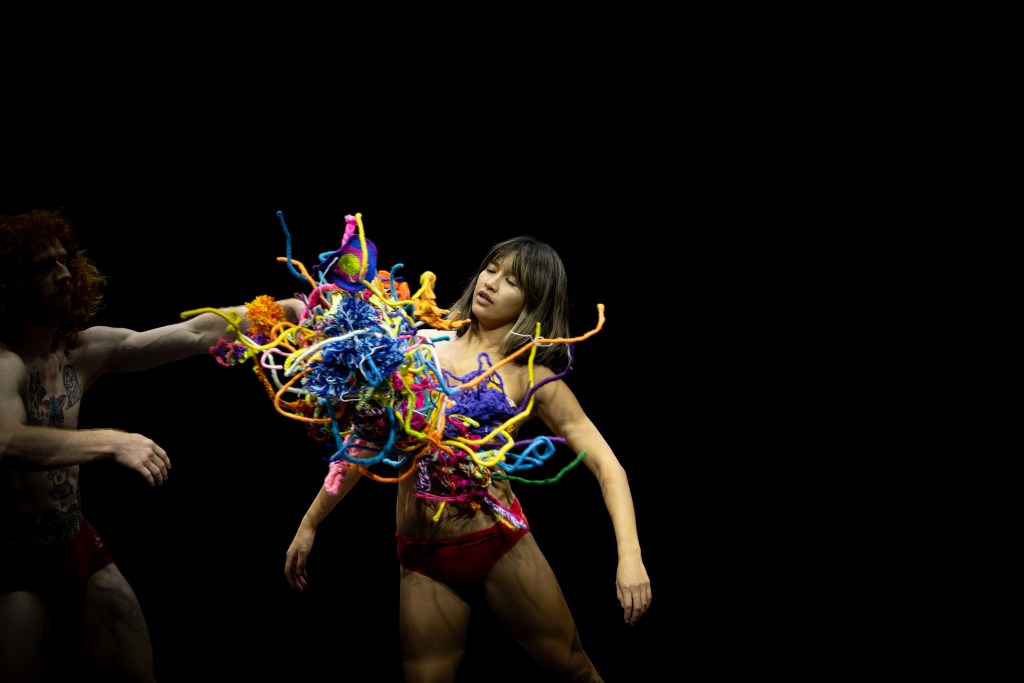
Making people feel truly welcome: a case study
Dancenorth Australia has been exploring how it can make the company’s contemporary dance productions more accessible and inclusive for audiences. Its current production is Wayfinder, which is travelling around Australia on a national tour.
At the recent Mona Foma festival, the Theatre Royal and Dancenorth offered audience members the opportunity to book into a free tactile tour. The tour guide was [ArtsHub contributor] Lesley Graham, who has been active in dance and dance education for over 30 years. Graham’s expertise in dance and movement was essential as she also audio described the show.
Read: How to create exciting and accessible tactile tours
Providing both the tactile tour and audio description is best practice for accessibility, as it adds necessary detail. In the case of Wayfinder, offering both the tactile tour and audio description was particularly important for ensuring the production was a truly immersive experience for all audience members. The show is performed on an inflatable stage, which enables the dancers to achieve extraordinary heights. During the tactile tour, participants were invited onto the inflatable stage.
‘This turned out to be one of the most thrilling aspects of the experience,’ says Dancenorth’s Artistic Director and co-CEO Kyle Page. ‘The more we can invite people in with a genuine sense of interbeing, where they feel truly welcome, the more we really meet people where they are, the more magic arises.’

